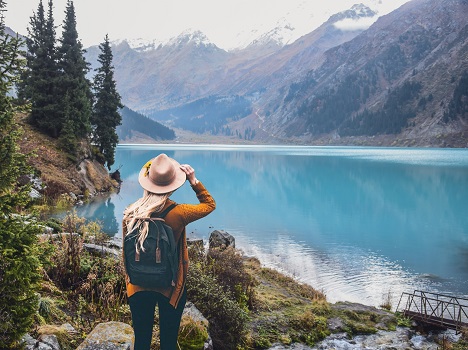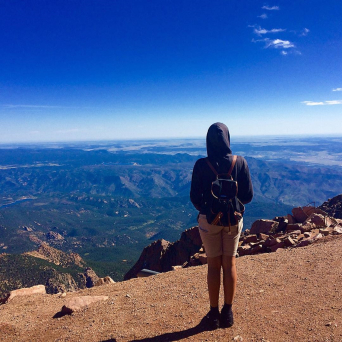- Share
The idea of trying to introduce a post-soviet country as an attractive destination for travelers to visit is nothing but a race against time.
Things that are related to the Soviet heritage have always been interesting to foreign travelers. And they are ready to board long-haul flights, ready to travel journeys worth of many exhausting routes with not the best of roads. All this just to be able to touch the history, which they have heard about what went down on the other side of the “Iron Curtain”.
And where there’s some kind of demand, there is always a supply. There are tour companies with long-time experience in this form of niche tourism, which brings in not huge, but guaranteed and stable flow of tourists.
What the tour is all about
It’s now been about a decade since the last time a “Back to the USSR” tour has been created and is still available by one of the companies in Karaganda. The program lets you get acquainted with a different side of the Soviet Heritage in the central region of Kazakhstan; such as Stalin’s camps of AlZHIR (there is a dedicated museum in Aqmol village) and Karlag (a dedicated museum exists in the former administrative building of the camp in Dolinka village). There are also towns that have been formerly closed down, such as the town of Kurchatov and some more interesting places around the Semipalatinsk nuclear test site with Atom lake and the Test site to be the least. The abandoned town of Shagan has this airfield of strategic aviation for all you fans of soviet aeronautics; and there is also The Museum of Anatomy in Semey, which you may be interested in. The tour also includes a visit to town of Karkaralinsk, which witnessed the battle of the “whites’ and the “reds” in the Civil War of Soviet Union in the beginning of the 20th century. And most certainly, the soviet architecture of the capital city and the city of Karaganda attracts a lot of attention from the foreign community. There is also a museum dedicated to mining, which illustrates the consequences of the industrialization of a soviet period Karaganda. Another place that attracts guests’ attention is the Museum of Ecology in Karaganda, where you can see the influence on the environment by that period.

A visit to the Bogatyr coal mine in Ekibastuz and to other places like a square of the Soviet monuments in Aksu, can be organized upon request. In other words, these different places will show you different sides of the effects left by that period.
Lovers of “Communism”
- This is one of the main tours of our company, and has been created according to a specific request – says the organisator of the tour – Vitaliy Shuptar. - Two men, who appeared to be amateur historians and were interested in soviet heritage, came to our Dutch partner. For some reasons, they had been quite fond of this theme from their youth and they travelled around the world trying to find locations related to Communism. Their apartments in The Netherlands (which we later visited) can be easily called a mini-museum of the soviet history. They knew about some things even better than us. By that time we were already experienced in organizing tours to Semipalatinsk test site and we made excursions to Dolinka and other Karlag objects. A few weeks of our communication resulted in the formation of a six day tour and the first one was implemented a few months right after. Then we decided to make it as one of our regular tour programs. So, basically it was a good idea to promote these locations with a splash of a little “soviet sauce”.

Can you organize it without a tour agent?
If you’re wondering if there’s a chance to organize this kind of a tour without a tour operator – the answer is yes, just make sure you have the right navigation skills and the specific knowledge that would be required.
However, some places require a special permissions or procedures for visiting (for example, it is impossible to enter the Test site Museum in Kurchatov without permission of the National Nuclear Center). Moreover, you should have some specific knowledge and adequate equipment in order to walk around the test site territory.
It seems way too easy, just to take a dosimeter, to find a map on the internet and set out for an adventure and you are ready to visit the test site. But in reality it doesn’t quite work that way. For example, the most common domestic dosimeter are able to only detect gamma radiation, while there can be other forms of radiation such as “beta” in some of the territories surrounding the test site. And as a consequence, if you go there without proper training and equipment; everything will seem to be ok on the outside, while you might be getting doses of radiation of dangerous levels.
Some objects on the test site territory are still functional (there are nuclear radiators), and contact with the security is not likely to benefit your tour in any positive way.
For foreign travelers, who don’t know Russian or Kazakh languages, some places that are included in the tour program will be difficult to visit due to the inability to communicate and public transportation issues in Kazakhstan. It’s one thing to get there by bus, which goes by schedule from a certain place, and another thing to have to deal with a taxi driver to get you to the Karlag museum in Dolinka and to the Spassk memorial.
In other words, this tour is unique and only those who work on it professionally, day after day, know what it means.

More places to visit
If we think about the places in Central Kazakhstan that reflect the soviet period, the first thing that comes to our minds is the test site of Saryshagan. With its center – Priozersk, which is still militarily closed and its numerous abandoned sites and interesting ruins interspersed throughout the whole of Betpak-dala steppes.
One more interesting places to visit is the talked about GULAG – Steplag camps, which functioned in Jezkazgan and its regions. Birthplaces of Kazakh intellectuals, like Saken Seifullin and Alikhan Bokeikhanov, who were under the fear of Stalin’s tyranny, can also be added to the agenda of tours.
Foreign travelers are also interested in small elements of that historical period, such as old bus stops, which can still be found in Kazakhstan, and mosaics, which were used for the decoration of municipalities and haven’t been dismantled or covered with other materials during restoration.

And if we go further from Central Kazakhstan, we cannot ignore the Aral sea, which can make the tours much more interesting.
In conclusion, “dark tourism” and, in particular, the abovementioned tour program has a good potential to attract more travelers. And our tourism companies are always there to organize the tour of your dreams just for you







.jpg)








